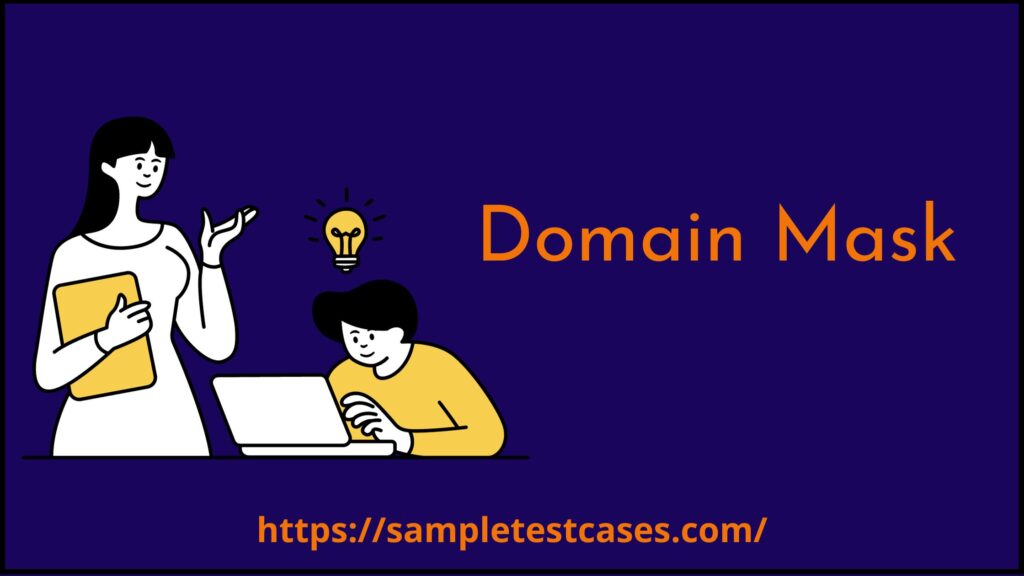In this article, we will delve into what a domain mask is, why it’s crucial, and how it contributes to bolstering online security. In the ever-evolving landscape of the internet, the importance of cybersecurity cannot be overstated. As technology advances, so too do the methods employed by cybercriminals to exploit vulnerabilities and infiltrate systems. One of the fundamental tools in the arsenal of web security is the domain mask, a concept that plays a pivotal role in safeguarding online assets and ensuring a safe digital environment.
What is Domain Mask?
A domain mask, often referred to as a URL masking or domain forwarding, is a technique used to hide the real URL of a website or web page by displaying a different URL in the browser’s address bar. This serves two primary purposes:
- Aesthetic and Branding: Many businesses and individuals use domain masking to create a cleaner, more user-friendly URL for their website.
- Redirection: Domain masking can also employe to redirect users from one URL to another. This is commonly used for marketing purposes, affiliate links, or to guide users to specific landing pages while maintaining a consistent web address in the browser.
Why is Domain Masking Important?
While domain masking is commonly used for aesthetic and marketing reasons, it holds particular significance in the realm of web security:
- Protecting Sensitive Information: By concealing the actual URL of a website, domain masking helps prevent attackers from directly targeting vulnerabilities in the website’s structure. This adds a layer of security, as cybercriminals may struggle to identify and exploit potential weaknesses.
- Mitigating Phishing Attacks: Phishing attacks involve tricking users into believing they are on a legitimate website when, in fact, they are on a fraudulent one. Domain masking can help thwart these attacks by making it more difficult for cybercriminals to create convincing fake websites.
- Preserving User Trust: Users are more likely to trust websites with clean, familiar URLs. By using domain masking, organizations can maintain their brand identity and user trust, as users are less likely to deter by lengthy or complex URLs.
- Enhanced Privacy: Domain masking can also use to protect the privacy of the website owner or administrator by keeping their contact information and server details hidden from the public eye.
Best Practices for Domain Masking
While domain masking offers numerous benefits, it should use judiciously and in compliance with best practices to avoid potential pitfalls:
- Transparent Redirection: If you’re using domain masking for URL redirection, ensure that users are aware they being redirecte to another URL. Transparency is key to maintaining trust.
- Avoid Overuse: Don’t overuse domain masking, as it can confuse users and search engines. Use it selectively for specific purposes, such as marketing campaigns or branding.
- Keep Security in Mind: Even with domain masking in place, it’s crucial to maintain robust cybersecurity measures, including regular software updates, strong password policies, and SSL certificates.
- Monitor for Abuse: Regularly monitor your domain masking configurations to ensure they are not being abused for malicious purposes.
Applications of Domain Masking
- Branding and User Experience: As mentioned earlier, one of the primary reasons for employing domain masking is to enhance the user experience and strengthen branding. A user-friendly, concise URL can leave a lasting impression on visitors and make it easier for them to remember and access your website.
- Affiliate Marketing: In the realm of online marketing, domain masking frequently use in affiliate marketing programs. It allows affiliates to use custom domain names that redirect to affiliate links while appearing as if they lead to their website, providing a cleaner and more trustworthy appearance to potential customers.
- Multi-language Websites: Companies operating internationally may use domain masking to create language-specific URLs that direct users to the corresponding language version of their website. This streamlines the user experience and ensures visitors direct to content in their preferred language.
- A/B Testing: Digital marketers often use domain masking to conduct A/B tests. They create multiple landing pages with distinct URLs and mask them with a single, easily shareable domain to test which page performs better.
Technical Considerations
- HTTP vs. HTTPS: When using domain masking, ensure that both the masked and destination URLs support HTTPS. SSL certificates should correctly configure for both domains to maintain secure connections.
- Search Engine Optimization (SEO): Domain masking can have implications for SEO. Search engines may interpret masked URLs differently, potentially affecting your website’s search rankings. Properly configure canonical tags and monitor your SEO performance when using domain masking.
- Mobile Compatibility: Ensure that domain masking works seamlessly across various devices, including mobile phones and tablets. Mobile responsiveness is crucial for a positive user experience.
- Server Load: If you expect high traffic to your website, consider the server load implications of domain masking. The process of redirection can impact server performance, so plan your hosting infrastructure accordingly.
- Testing and Monitoring: Regularly test and monitor your masked domains to ensure they are functioning correctly. Address any issues promptly to prevent disruptions to user experience.
- Legal and Ethical Considerations: Ensure that your use of domain masking complies with legal and ethical standards. Misleading users or attempting to deceive them through domain masking can have legal repercussions.
Conclusion
In an age where online security is paramount, the domain mask stands as a valuable tool in the hands of web administrators and businesses. It not only enhances branding and user experience but also contributes significantly to safeguarding websites and users from potential cyber threats. When employed responsibly and in accordance with best practices, domain masking can be a powerful ally in the ongoing battle to secure the digital realm.
